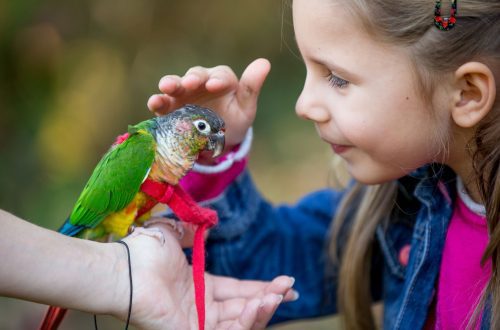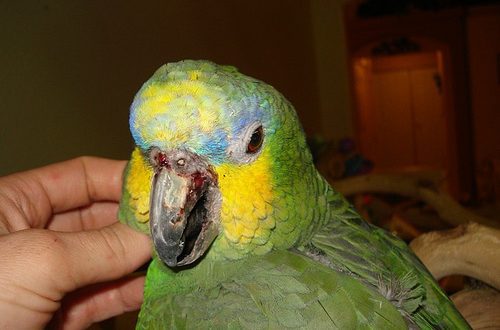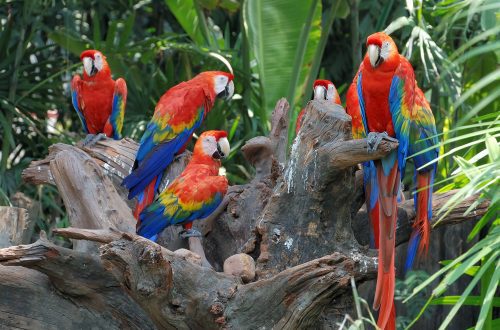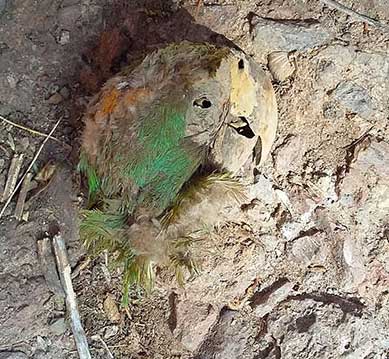
Mummified head of macaw parrot found in ancient grave
In the north of Mexico in the suburbs of San Francisco de Borja, Chihuahua, the mummified body of a macaw parrot was found by locals. Manuel Rodriguez and his son were doing repairs in their cave, and while leveling the floor, an ancient burial was discovered.
Although archaeologists have been advised of find, before their arrival, the grave was dismantled and it was impossible to determine the specific burial place and the state of affairs. Archaeologists have found that the remains belonged to two adults, evidenced by two skulls, several long bones, human hair, remnants of cloth, twine, a processed deer skin (possibly serving as a loincloth or bag), a basket, a shell, and a parrot head.
The head of the macaw was perfectly preserved thanks to natural mummification – it is still covered with bright green feathers. Residents claim that the parrot was intact, but they took only the head and left the body in a ruined burial.

Archaeologists, having explored the cave, tried to restore the original location of things, which turned out to be almost impossible. But they were able to determine that this place was a living quarters. The walls were plastered with clay and reeds. On the surviving section of the wall, a handprint of a builder who coated the walls with clay was found.
The floor in such a dwelling was earthen, and a place was also found where a fire was kindled. A charred corncob was found nearby, which was sent for radiocarbon analysis. Nearby lay ropes, parts of baskets, gourds, about three dozen arrowheads, as well as human coprolites.
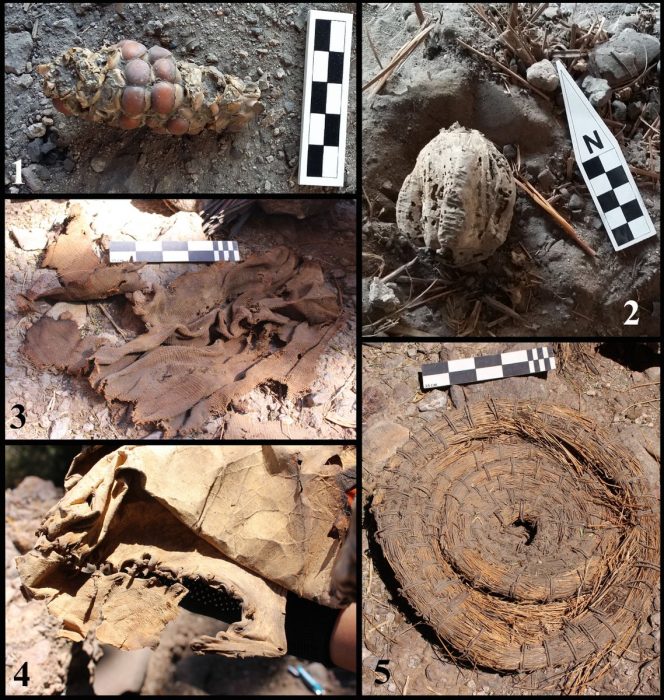
In the second part of the cave, the lower half of the body of a man with bound legs was found. Archaeologists suggest that it was a secondary burial. Coals, burnt corn cobs, and arrowheads were scattered around it.
A similar reed dwelling was built in 2500-1000 BC, and the shape of arrowheads is more ancient – 1000-700 BC.
Despite the fact that the head of the macaw was separated from the body by local residents, this is the first evidence that the bird was buried next to the whole person.
In Pakima, a city in the state of Chihuahua several centuries later, macaws were often used in religious ceremonies. In the burials of 1060-1340, birds could be found in large numbers. Parrot feathers were popular as jewelry, earrings, bags were sewn from their skins. For this reason, they were bred in Pakim for rituals and sale.
Macaws were highly valued in northern Mexico and the southwestern United States, as the bird was imported and cost a fortune. Due to the large size of the macaw parrot and the ability to soar high above the ground, people associated them with the sun, and the emerald-blue plumage color reminded them of life-giving rain and water.
Finds in the burial confirm long-distance trade links: shells come from the coast of the Gulf of California, macaws are residents of the south.
Archaeological excavations in other parts of Chihuahua show that the inhabitants of the coast actively traded with the northern parts through the Sierra Madre Occidental mountains, but this discovery is the first confirmation of this in San Francisco de Borja.



